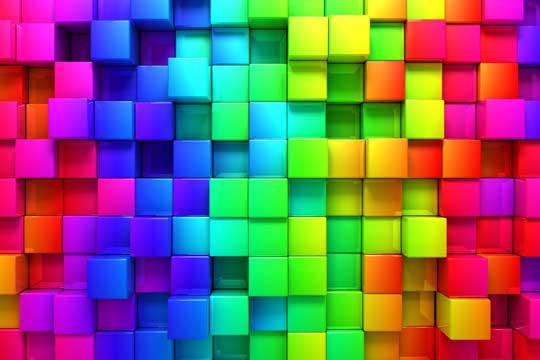Reviewed by Anurag Mishra (Sr. Technical Consultant)

What we see as colour is the sensation produced by the wavelength in the range of 380-780nm which is the visible part of the spectrum. What we perceive is the wavelength absorbed or reflected by the object surface, which can be diffused or specular. Surfaces with a smooth finish like glass are usually specular reflection, which happens when the angle of reflection is equal to the angle of incidence. However, other surfaces exhibit diffused reflection which gets scattered due to the roughness of the surface.
Not all surfaces give specular reflection because there is a certain level of roughness on the surface. This is why what we perceive is the diffused reflection. And those surfaces that have somewhat glossy appearance have both specular and diffused reflection. However, when have both types of reflection, the measurement becomes difficult. Because it has to be identified which type of reflection of dominating. Also, it is to be considered whether the whole reflection is to be considered or some part of it. The texture of the sample should be considered to select the best angle for a reflected colour measurement.
Using a Spectrophotometer for Colour Measurement
There is often a debate whether to use colorimeter for an application or spectrophotometer. Colorimeters that are used commonly based on filters and used for measuring reflected colours. They are equipped with red, blue and green filters along with a group of diodes that act as a sensor. There are tristimulus filters that are complied with CIE colour matching functions. Incandescent light sources are used as incident lights which are considered less accurate than the LED light source. Portable colorimeters may measure up to 20 wavelength bands, but this is not enough for research or high-accuracy measurements.
When it comes to measuring small colour changes, very sensitive and high colour resolution is required. Spectrophotometers are capable of measuring even very small colour variations and does a very detailed analysis of colour data. This is where colorimeters lag. They are incapable of measuring information on specific bands.
When measurements are being done with a spectrophotometer, the starting point is calculated as assumed as a reflective or emissive spectrum. The data captured is analysed by capturing the complete spectrum. Which can be changed and altered later to change the observer, colour space and illuminant. Such flexibility is available in spectrophotometer only.
Optimization of Reflection Measurement for Colour
Incident Light – To get a reflection from a surface, it is important to throw some light on it. The light spectrum should be in visible range i.e. 380-780nm, as human eyes can view only this range. Tungsten halogen light works perfectly as an incident light source. It is pocket-friendly and serves many other purposes.
Sampling Optics – Either Vis-NIR or UV-Vis optical fibres can be used for colour measurements since both transmit well between 380-780 nm. However, UV-Vis fibres give better transmission below 400nm, which is useful for signal to noise ratio.
Aperture plays an important role in collecting the reflected light sources from different angles. Apart from that, it prevents the external light sources from interfering the incident light. Colour measurement done by using large aperture spectrophotometers are more accurate than small aperture and are particularly in L*a*b* scale. Also, it is important to consider whether specular reflection (gloss) should be included in your colour measurements.